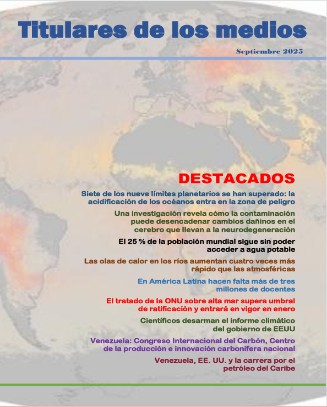European banks and oil expansion in Latin America
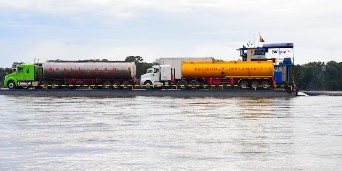
DW, 10/01/2025
Synopsis: The study "The Money Trail Behind the Expansion of Fossil Fuels in Latin America and the Caribbean," prepared by the German NGO Urgewald, the Brazilian NGO Arayara, the Argentine NGO FARN, the Mexican NGO Conexiones Clima, and Amazon Watch, reveals that the accelerated oil expansion in Latin America, driven by both international companies and state-owned giants such as Petróleos Mexicanos (Pemex) in Mexico, and Petróleo Brasileiro S.A. (Petrobras) in Brazil, threatens societies and the environment and violates international climate commitments.
According to the study, since 2022, companies in the region have spent more than $28 billion exploring for new oil and gas fields. In the case of the two largest oil companies in the region, Pemex and Petrobras, they are heavily investing in methods such as hydraulic fracturing (fracking) and ultra-deepwater exploration, which environmentalists consider conflictive and high-risk.
"There is no visible transition to clean energy in public companies," objects Heffa Schücking, one of the report's authors.
Latin American oil expansion is heavily supported by external financing from European and North American banks, the study found. In the last three years, 297 banks have provided more than $138 billion to companies developing new fossil fuel projects in the region.
However, the largest institutional investors in Latin American fossil fuel companies come from the US and are the investment funds Vanguard ($40.9 billion), BlackRock ($35.3 billion), and Capital Group ($16.8 billion).
Fossil fuel expansion not only fuels corruption and debt, but also harms affected communities who suffer from pollution, displacement, and constant threats.
The infrastructure accompanying this expansion includes nearly 8,800 kilometers of new gas and oil pipelines, as well as 13 liquefied natural gas (LNG) import terminals and 19 export terminals.
Three terminals are planned for the Gulf of Baja California to serve foreign interests, questions Pablo Montaño, an expert at Climate Connections. This area of the Pacific, known as "the world's aquarium," is home to five species of whales, 900 species of fish, and six species of turtles, and accounts for half of Mexico's fish production.
Mining tragedy in Venezuela: At least 14 dead after collapse at gold mine in El Callao
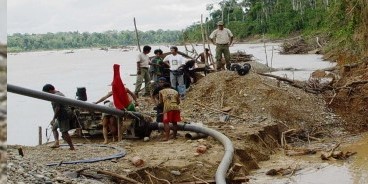
Aporrea, 10/14/2025
Synopsis: In the early morning of October 13, in the area known as Cuatro Esquinas in Caratal, Bolívar state, several vertical gold mining shafts (mines known as barrancos) collapsed after heavy rainfall. Witnesses said the workers were trapped when the falling water and the instability of the pits caused the extraction cylinders to instantly collapse. The miners were spread across three different shafts and were trapped when they flooded. Three people were found dead in shaft 1, five in shaft 2, and six in shaft 3, for a total of 14. This is a link in the same chain as the Bulla Loca mine, where 16 miners perished, the consequences of which are still demanding justice.
Dozens dead and missing due to catastrophic rains ravaging Mexico
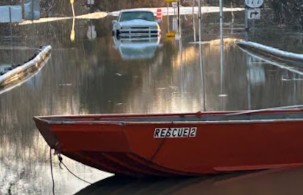
The New York Times, 10/13/2025
Synopsis: Authorities reported that 64 people had died and 65 were missing in five affected states near the Gulf of Mexico, and the death toll is expected to rise.
President Claudia Sheinbaum said her government estimated that some 100,000 homes had been affected by flooding and landslides. Dozens of communities remained isolated.
Extremely intense and localized downpours caused the greatest destruction in the central and eastern parts of the country-in the states of Veracruz, Hidalgo, San Luis Potosí, Querétaro, and Puebla-where they caused the greatest destruction, causing rivers to overflow and triggering landslides. They also disrupted power supplies, leaving more than a quarter of a million people without electricity.
Studies suggest that as global temperatures rise, storms produce more extreme rainfall because warm air retains more moisture than cold air.
More than 7,300 Army soldiers and National Guard members have been deployed to help rescue and evacuate the population.
The EU addresses the threat of sargassum in the Caribbean
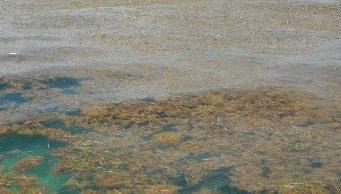
DW, 10/04/2025
Synopsis: The European Union has sponsored the Third EU-Caribbean Conference on sargassum, an algae that has invaded the Caribbean for more than ten years, causing countless disasters to beaches and coastal areas, including loss of biodiversity, a decrease in tourism, and unpleasant odors.
According to the Mexican organization The Sea We Love, comprised of the Riviera Maya Hotel Association, during the season alone when sargassum arrives on the coast in large numbers (between 6 and 9 months each year), the economic impact of its removal on the hotel industry amounts to approximately $130 million.
Now, the goal is to leverage the exploitation of this algae to develop profitable initiatives.
For example, The Sea We Love has created a platform for collecting sargassum and transforming it into biomethane, biostimulants, and biogas. In the Dominican Republic, SOS Biotech focuses on transforming it into fertilizer for plants and flowers. Barbados launched the first vehicle powered by natural gas obtained from sargassum, and in Martinique, a refinery is dedicated to converting sargassum into energy, and a platform of companies collects seaweed from the sea for composting. But these are small-scale initiatives.
|
Sun and wind will outperform coal and cover 100% of the increase in electricity demand in the first quarter of 2025.

Noticias ONU, 10/07/2025
Synopsis: Renewable energy reached a historic milestone in the first half of 2025 by covering the entire increase in global electricity demand, according to the latest report from the research center Ember. Furthermore,
It is projected that 2025 could be the first year in which fossil fuel generation experiences a significant decline. The document reveals that China is emerging as the main driver of this expansion, accounting for 43% of the growth in solar generation and 44% of the increase in wind power globally.
The analysis reveals that solar and wind generation grew 12% year-over-year during the first six months of the year, producing an additional 1,023 terawatt-hours. This increase exceeded the global increase in electricity demand, which was 1,020 terawatt-hours compared to the same period in 2024.
The report emphasizes that this growth occurred despite adverse factors such as the drought in South America-which reduced hydroelectric generation-and the economic slowdown in some markets.
This growth, the fastest ever recorded, consolidates clean energy as the world's largest source of electricity, surpassing coal by the end of this year.
Did you know that Venezuela is one of the few CO2-negative countries in the world?
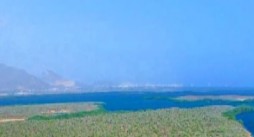
Prensa MinEcosocialismo, 10/10/2025
Synopsis: This was emphasized by the Minister of People's Power for Ecosocialism, Ricardo Molina. In this regard, he said, Venezuela is one of the few countries in the world at the forefront of becoming CO2-negative. "Few have achieved this goal. What does this mean? Venezuela captures much more carbon than it emits into the environment, and this is thanks to a clear policy that preserves more than 60% of the national territory, such as the 408 Specially Managed Areas (ABRAE)," he explained, highlighting that these are protected by laws and special plans for the conservation, sustainable use, and protection of their characteristics. These areas include national parks, natural monuments, and wildlife refuges, among others.
"The results indicate that the Bolivarian Republic of Venezuela recorded emissions of 160,725 Gg CO2 eq and absorptions of -285,198.53?Gg CO2 net. However, it recorded an increase in emissions in the agriculture and livestock sector, due to the increase in national production to guarantee food security. Aware of this, sustainable and respectful agricultural practices are promoted to reduce emissions."
The buildings in Colombia and around the world that would be affected by rising sea levels

El Espectador, 10/05/2025
Synopsis: Rising sea levels have become an unavoidable phenomenon. As ocean temperatures increase, many coastal areas have been shrinking. In Colombia, for example, Playa Salguero in Santa Marta; Punta Coquitos in the Urabá region of Antioquia; and the Corales del Rosario National Natural Park in Cartagena have lost more than half their size in the last 50 years.
New research published in Urban Sustainability by the Nature group shows on a map what this could mean for the more than 100 million buildings near the coast in the so-called "Global South." Their data, it is explained, is vital for urban planners to begin formulating paths that will allow them and the affected communities to address the situation.
"We were surprised by the large number of buildings at risk from relatively moderate long-term sea level rise. Some coastal countries are much more exposed than others, due to the particularities of coastal topography and building locations," said Professor Jeff Cardile, co-author of the research and a professor at McGill University, in a statement.
"With a rise of just 0.5 meters, a level projected to occur even with ambitious emissions reductions, approximately three million buildings could be inundated. In scenarios with a rise of five meters or more, as would be expected within a few hundred years if emissions are not stopped soon, exposure increases dramatically, with more than 100 million buildings at risk," reads a statement from McGill University.
"Sea level rise is a slow but inevitable consequence of warming that is already affecting coastal populations and will continue for centuries. People often talk about sea level rises of tens of centimeters, or even a meter, but in reality they could continue to rise by many meters if we don't stop burning fossil fuels quickly," said Professor Natalya Gomez, co-author of the study and professor at McGill University. "".
Scientists issue a dire warning about birds

RT, 10/09/2025
Synopsis: A recent publication by scientists at Binghamton University (USA) warns of a collapse in birds' various migratory routes that would have apocalyptic effects for their species, with climate change being the main cause of these changes in their migration process.
"These migration periods can coincide with extreme weather events, which are becoming much more common," said Anne Clark, professor of biological sciences at Binghamton University.
According to the study, birds have a predetermined route for their travels and even use certain areas as refueling stations to reach their destinations when they travel long distances. Due to the catastrophic effects of climate change, when these birds reach their waypoints, they realize that these refueling centers no longer exist, forcing them to modify their route.
The main result of this phenomenon is the death of birds from starvation and their eventual disappearance as a species due to the lack of breeding partners. The late extension of the hurricane season could leave these animals struggling to cope with the ravages as they cross the Gulf of Mexico.
|
At least 146 environmental and land defenders were murdered or disappeared worldwide in 2024.

Global Witness , 09/17/2025
Synopsis: At least 146 human rights defenders were killed or disappeared* worldwide for protecting their territory, their community, or the environment, according to a new report by Global Witness. The new figures bring the total number of murders and disappearances between 2012 and 2024 to 2,253.
The report states that in Latin America, 117 human rights defenders were murdered last year (82%), 48 of them in Colombia, the country with the highest number of homicides in the world for the third consecutive year, followed by Guatemala with 20 murders, Mexico with 18, and Brazil with 12. Of the cases, 29 were linked to mining and extractive industries, 8 to logging, and 4 to agribusiness. More than 62% of the cases were related to the defense of territories and access to land.
Once again, the victims of nearly a third of fatal attacks were Indigenous people, despite the fact that they make up approximately 6% of the world's population.
The lead author of the new Global Witness report, Laura Furones, said: "Year after year, people who defend the environment and territories, who protect our forests, rivers, and lands around the world, suffer unspeakable violence. They are persecuted, harassed, and killed, not for breaking the law, but for defending life itself."
Venezuela believes that the zero-emissions goals for 2050 "will not be respected."
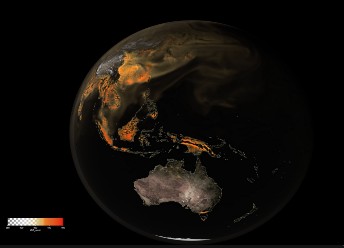
SWI swissinfo.ch, 10/01/2025
Synopsis: Venezuela's Executive Vice President and Minister of Hydrocarbons, Delcy Rodríguez, warned that "the entire planet now knows that the carbon emission targets set for 2050 will not be met," during her speech at Africa Energy Week.
In the official's opinion, investments "have not been sufficient" and "developments to capture these emissions have not been sufficient either." In this regard, she advocated for an energy transition focused on "affordability, security, and, above all, environmental sustainability, while respecting the rights of Mother Nature."
According to the UN, to limit global warming to no more than 1.5°C (degrees Celsius), emissions must be reduced by 45% by 2030 and achieve net-zero emissions by 2050.
The Earth is losing its balance: the north of the planet is darkening

El País.es, 09/29/2025
Synopsis: The journal PNAS published the results of a NASA study that detected the emergence of an asymmetry since 2020 between the two hemispheres, between the solar radiation they receive and the amount of solar radiation they reflect, for various reasons, all of human origin. This could have far-reaching consequences for the Earth's climate system, which relies on the redistribution of differences in heat or energy that fuel atmospheric and oceanic circulation.
The upper layers of the atmosphere in each hemisphere receive the same amount of sunlight on average annually. A third of this incident radiation is reflected by clouds, aerosols, and the surface itself; this is the albedo effect. According to the CERES project, this effect is waning in both hemispheres, but in the northern hemisphere, the darkening is deeper and more accelerated.
Another change highlighted by NASA is "the increase in snow and ice melting, which was faster in the northern hemisphere than in the southern." For various reasons and processes, melting is more pronounced in the Arctic, reducing its albedo capacity, which its substitute, seawater, captures, warming it, producing an imbalance between the two hemispheres.
Previously, the Southern Hemisphere gained energy in the upper layers of the atmosphere, while a net loss occurred in the North. This differential was compensated for by oceanic circulation (the major marine currents) and atmospheric circulation through clouds. Since 2020, the process has been reversed; the North captures more radiation, causing warming to be greater in the North.
This will affect the general circulation of the atmosphere and the regional climate. Changes in precipitation have already been observed, along with a slowdown in the circulation of the main ocean current, and even a northward shift of the so-called Intertropical Convergence Zone, a band around the equator where the trade winds of both hemispheres converge.
Aiko Voigt, professor of meteorology and geophysics at the University of Vienna, explains that "But we will need more years to see whether it cannot be restored by some (unknown?) mechanism, or how large the asymmetry could become."
For Josep Calbó, professor at the University of Girona, "it is probably another symptom of climate change, which affects global circulation and could break the symmetry in the albedo."
Venezuela: Science Minister: The country had 300% more rain than expected due to the climate crisis.

Agencias, 10/09/2025
Synopsis: The minister reported that this year Venezuela recorded 300% more rainfall than expected. This anomaly has had significant consequences: For example, the Orinoco River has experienced a rise that exceeds records from the last 60 years.
The increased rainfall and flooding affected more than 7,000 Venezuelan families. Furthermore, there has been an increase in the proliferation of vectors and associated diseases as a result of what is now called a climate crisis or emergency. They have also affected agricultural productivity, biodiversity, and the daily lives of citizens.
These climate variations also generate twice as many cyclones and hurricanes, along with rising temperatures and evaporation rates in the Caribbean Sea.
|





